
Since its introduction in 1979 Mercedes Benz G Class (or G-Wagen, by its popular German name) has become a popular vehicle with government organizations and military forces that sought the brand’s dependable operation and off-road mobility. Winning important contracts, and prospecting new markets, on its 40th anniversary this vehicle continues to evolve. Two new vehicles, Mercedes’ own Multi-Role Vehicle (MRV) and Israel’s Plasan Hyrax are two of the new vehicles recently introduced in this class.
A four-wheel drive sports utility vehicle (SUV) Mercedes-Benz G-Class is produced by the Graz based Steyr company in Austria. With over 300,000 vehicles produced, and numerous updates through the years, the vehicle and still in production – the longest produced Mercedes-Benz vehicle in Daimler’s history.
The original design was modified into more than 70 variants used by military and security forces in 34 countries. The main operators include Australia, Canada, Denmark, Germany and Norway, each operating thousands of vehicles. Beyond the versatile utility role, armies also use the G-Class in combat-ready configurations. Bulgaria, Canada, Egypt, Finland, Germany, Hungary, Indonesia, Malaysia, Netherlands, and Norway are some of the users of those armored and armed variants.
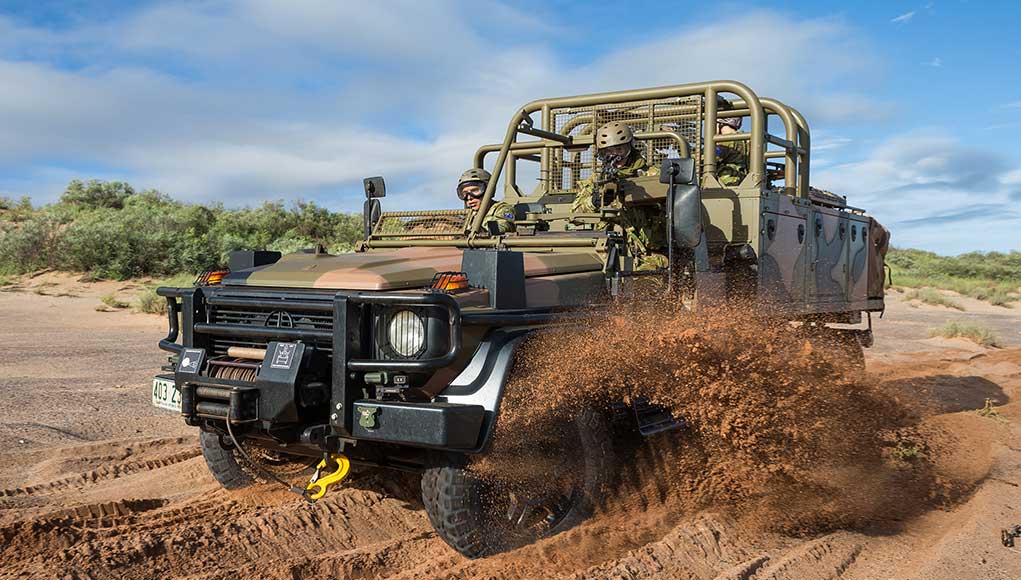

Developed as a military vehicle since the 1990s, it entered service with the German Army, first as the ‘Wolf’ and later as ‘Enok’, an improved Light Armored Patrol Vehicle (LAPV). When it entered service in 2007 it was the lightest category of a new family of German armored vehicles (GFF). Enok is currently used in three armored versions – a pickup closed van and MedEvac vehicle, as well as an unprotected van.
Designed and built by ACS of Germany, Enok uses a ballistic steel cabin that provides good mine and IED protection. At a weight of 5.4 tons the protection level selected by the Germans exceeds the original vehicle’s permitted weight, and, therefore required special modifications. Powered by the 184 HP OM642 engine, Enok carries up to 930 kg of payload and develops 95 km/h road speed.
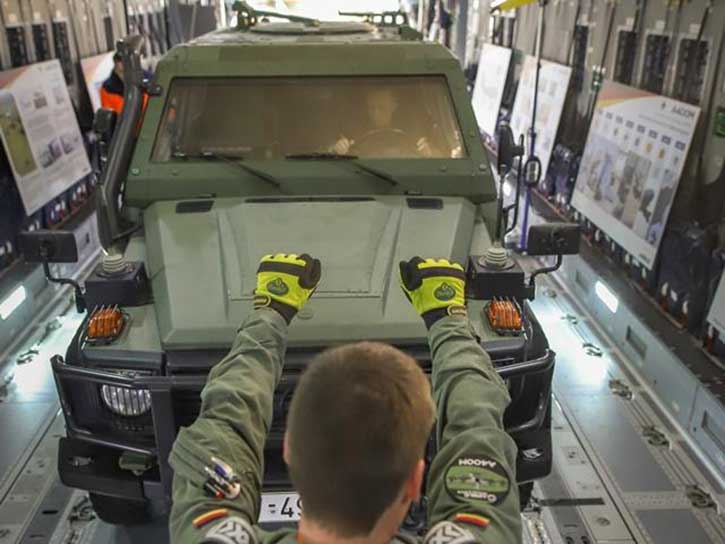
In a recent upgrade, the gross vehicle weight (GVW) was further increased to 6.1 tons, extending payload capacity to 1.3 ton. To improve mobility this model uses height-adjustable suspensions and upgraded axles resulting in much higher ground clearance. An even heavier variant is in development, maximizing GVW up to seven tons. Another growth option is the six-wheeled G 300 CDI was displayed in September 2019 at the recent DVD military event in the UK. The G 300 6×6 is designed to carry increased weight with improved off-road mobility.
Multi-Role Vehicle (MRV)
Addressing the needs of airmobile and special forces, Mercedes Benz developed a lightweight all-terrain multi-role platform based on the G-Class. The MRV’s uses a tubular frame to provide a lightweight and agile all-terrain platform that carries up to 3 tons of payload on and off road, at a top speed of 120 km/h. Mission autonomy is extended over 800 kilometers thanks to the large tank and low fuel consumption. 412mm of ground clearance ensures optimal off-road mobility and stability. Water crossing is also enhanced with the fording of one-meter deep obstacles.

Another important factor is air mobility – the MRV can be transported inside the CH-53 and CH-47 helicopters and even be sling-loaded under those helicopters using hooks embedded into the roll cage. Several Special Forces use G class vehicles, the most recent to adopt the platform was the Dutch military that will soon receive over 500 air assault vehicles (AASLT). This vehicle is a unique, lightweight configuration designed for the airborne brigade. The brigade will eventually operate over 1,000 such vehicles, configured for assault, transport, and ambulance roles. They will replace 20-year old G-Wagon vehicles that operated until now, will be designed to seat five combatants, carry 1.2 tons of equipment and be carried inside or sling-loaded under a CH-47 helicopter.
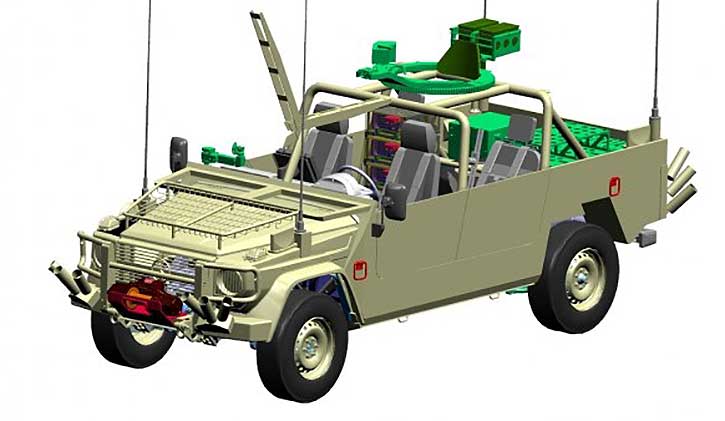


Plasan HYRAX
At the Eurosatory 2018 Israel’s armored vehicle expert Plasan unveiled the Hyrax – a lightweight, high performance armor protected vehicle, based on Mercedes Benz’ new G300 CDI Rolling Chassis. The Hyrax is the first vehicle utilizing this chassis, introduced by Mercedes Benz in 2017.
Powered by 183 horse powers developed by a Mercedes’ G300 CDI 6V Euro-3 engine coupled to a five-speed automatic transmission, that delivers 400 Nm of torque, Hyrax has a power to weight ratio of 38 HP/T, thus maintaining the class’ agility, acceleration and power braking. This aspect is becoming essential not only on highways, but also ascending or climbing mountainous dirt roads with full armor and combat load. At the Gross Vehicle Weight of 4,800 kg Hyrax carries up to 810 kg of payload when fully manned and loaded for a mission. As for air mobility, the vehicle is sized for transportation in C-130 aircraft.
The All-Wheel Drive (AWD) driveline uses a central differential locking system that includes electrically operated front and rear locks that enable all four wheels to overcome harsh terrain conditions. With a wheelbase of 2,850 mm and ground clearance of 245 mm Hyrax can climb a 400 mm vertical step, cross trenches 600 mm wide, and ford 600 mm of water, using its integral, elevated air intake. It safely negotiates 80% slope and 54% side slopes. The AWD maintains high stability and safety on and off road, moving on dirt, mud, snow and paved roads. Hyrax maintains all the G Class’ safety features, including power steering, ABS, ESP, BAS, EBD, and airbags for the front seats.
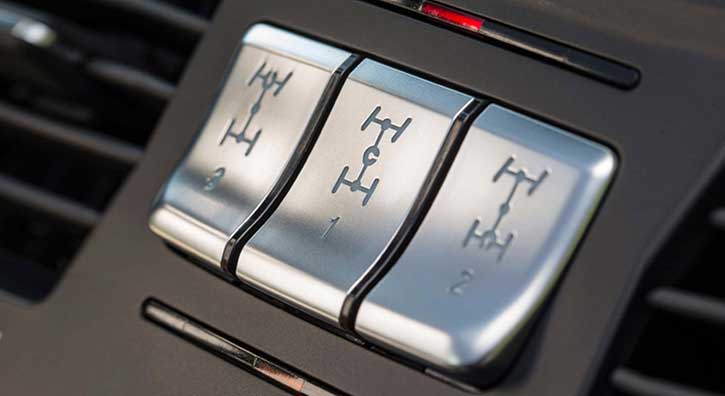
A major advantage of the Hyrax’ is its reliance on a commercial rolling chassis rated for 4.5-ton gross vehicle weight. Unlike other vehicles that require extensive modification to meet payload requirements, the robust frame and automotive system is ready to support the armored cabin, sustaining the vehicle’s dynamics through the full operating envelope, even in the fully combat loaded configuration. Built in cooperation with the original manufacturer (OEM), Hyrax is approved under the manufacturer’s warranty and is fully supported through the manufacturers’ worldwide service network.
As an armor protected vehicle Hyrax utilizes Plasan’s battle proven kitted hull technology. This modular design employs advanced, light armor that defeats small arms, fragments and armor piercing rounds, meeting EN1522 B6, B7 and STANAG 4569 Level 1 in the basic configuration and is upgradable to B7 and STANAG Level 2. The armor is made of composite materials and includes a large transparent windshield and side windows on all sides.
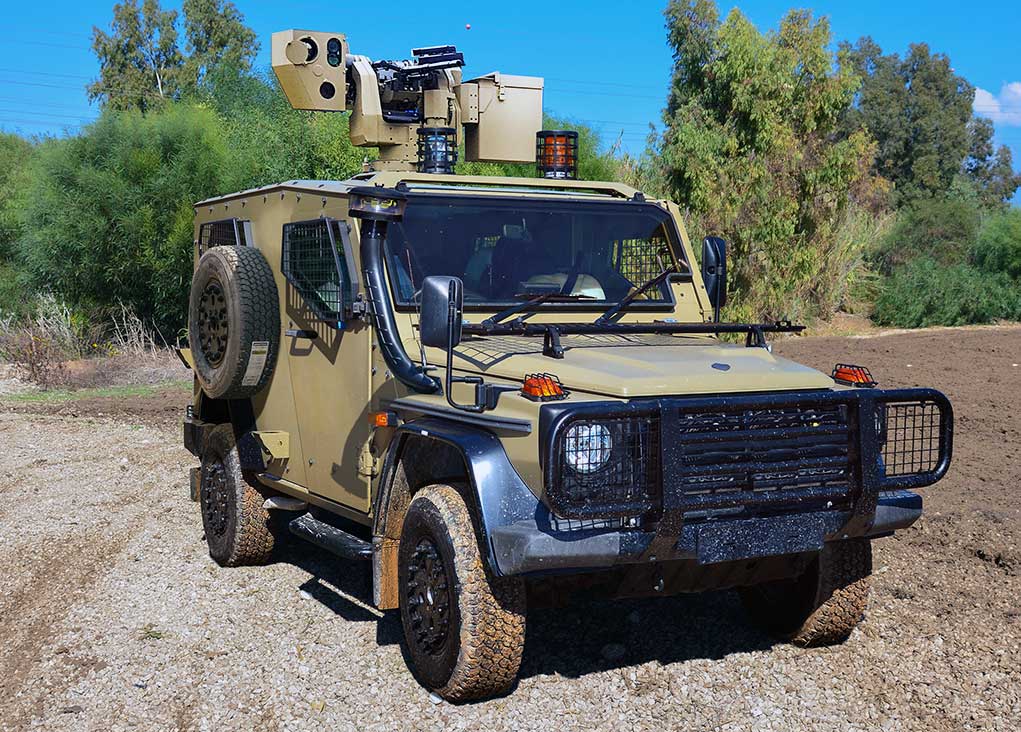
The spacious protected cabin can be configured in two or four door design and several seating arrangements, including 2+3, 2+4, 2+1+1 and 2+2+1. The armored capsule’s roof is built to support a protected gunner position or remotely operated stabilized weapon stations (RWS) mounting a light or heavy machine gun and optronic package. Such weapon systems enable the crew to track and engage stationary and moving targets while from inside the Hyrax’ protected capsule. Hyrax has recently completed operational and road testing with the Israel Defense Forces (IDF) and is now certified for use with the IDF. Developed by Plasan in cooperation with the OEM Mercedes Benz, the 4.8-ton Hyrax is positioned as a candidate to replace hundreds of ‘David’ light armored patrol vehicles that were based on modified Land Rover Defender 110 vehicles. Ten years after entering service the lighter (3.5 ton) David have worn out following extensive combat service.



















